Responding to the opinions of National Assembly deputies, the Minister of Planning and Investment said that he has deployed a number of specific activities to realize the goal of training about 50-100 thousand high-quality human resources for the chip, electronics, artificial intelligence application and new fields.
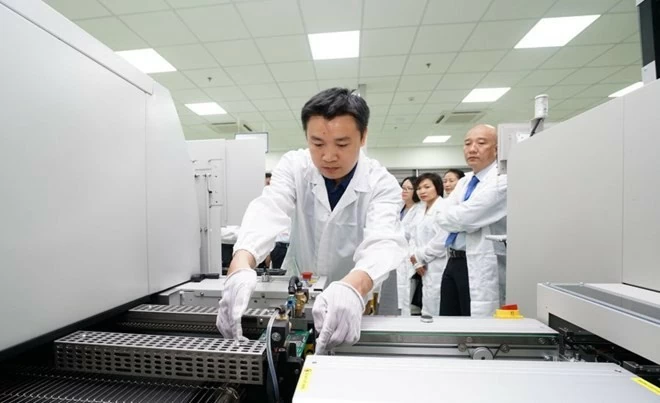 |
| The Ministry of Planning and Investment has implemented a number of specific activities to achieve the goal of training about 50-100 thousand high-quality human resources for the chip and electronics industries... (Source: VGP) |
Serving the discussion session at the hall on the economy and society on the morning of November 4, Minister of Planning and Investment Nguyen Chi Dung reported on the opinions of National Assembly deputies discussing in groups (October 26) on the results of the implementation of the socio-economic development plan for 2024; the expected plan for 2025.
Here, the Minister responded to the National Assembly delegates' request to clarify solutions, associated with a roadmap and specific implementation steps to realize the goal of training about 50,000 - 100,000 high-quality human resources for the chip, electronics, artificial intelligence application and new fields.
The Minister said that in Conclusion No. 64-KL/TW dated October 18, 2023 of the 8th Conference of the 13th Party Central Committee on Socio-Economic Development in 2023-2024, it was requested: "Focus on training 50,000 - 100,000 high-quality human resources for the chip and semiconductor manufacturing industry by 2025 and 2030". Resolution No. 103/2023/QH15 of the National Assembly on the Socio-Economic Development Plan for 2024 has identified the task: "prioritize allocating resources for training high-quality human resources for newly connected industries and fields, focusing on training 50,000 - 100,000 high-quality human resources for the semiconductor chip research and manufacturing industry by 2025 and 2030".
This is an important factor to help Vietnam attract large-scale FDI projects, strategic investors, as well as develop domestic enterprises participating in the chip and semiconductor industry. From there, promote economic restructuring, improve labor productivity, effectively exploit the achievements of the 4th Industrial Revolution, and create new growth momentum for the economy in line with global trends - the Minister stated.
The next information given by the head of the Planning and Investment sector is that with the above viewpoint, on September 21, 2024, the Prime Minister issued Decision No. 1017/QD-TTg approving the Program "Developing human resources for the semiconductor industry to 2030, with a vision to 2050" (Program). In which, the goal is that by 2030, Vietnam will train at least 50,000 engineers and bachelors to serve the semiconductor industry in all stages of the semiconductor industry value chain such as: design, packaging, testing and manufacturing of microchips, semiconductors, etc.
The program identifies 7 groups of key tasks and solutions.
Including, researching, building and perfecting specific mechanisms and policies to promote cooperation between the State - Schools and Enterprises, attracting domestic talents, overseas Vietnamese, international experts in the semiconductor industry, artificial intelligence to work in Vietnam, implementing talent training programs to serve the semiconductor industry, providing financial support for learners and facilitating investment and operation of semiconductor laboratory facilities.
Investing in infrastructure, facilities, and technology for training, using the central budget to support investment in equipment and copyrighted software to form, upgrade, and modernize semiconductor laboratories...
Organizing training at both undergraduate and postgraduate levels, short-term programs, and training lecturers associated with building content and curriculum frameworks that meet international standards and meet business requirements.
Mobilize and diversify social resources, both from the State and enterprises, to participate in training human resources for the chip and semiconductor industry.
Build ecosystem, create output for human resources, support business development.
Promote research and development, strengthen the connection between postgraduate human resource training and technology research and development activities in the semiconductor field.
The program also has a group of solutions on communication, enhancing international cooperation, encouraging ideas, initiatives, good practices, breakthroughs...
On that basis, the Program has identified specific tasks for each ministry, agency, and locality in organizing implementation. On the part of the Ministry of Planning and Investment, the Minister outlined a number of specific activities that have been deployed.
That is, the Ministry has proactively and urgently developed a Program Implementation Plan, assigning specific tasks to each ministry, branch, locality, and Program participant (universities and relevant agencies), ensuring clear people, clear work, clear results for timely assessment, advising the Government and the Prime Minister to direct and urge. Ministries, branches, and localities have completed plans to implement the assigned tasks and solutions in the Program, and proposed other tasks according to the solution groups. Universities and relevant agencies provide capital needs and develop project proposals to develop 4 national-level shared semiconductor laboratories and grassroots semiconductor laboratories at 18 public universities.
The Ministry has also determined the expected number of students, trainees and lecturers who will participate in short-term and long-term training programs to achieve the objectives of the Program. Based on the data on training capacity registration of higher education institutions, it is feasible to train 50,000 engineers and bachelors for the semiconductor industry by 2030, and the number could even be much larger if the market demand is able to absorb it.
The next action of the Ministry is to proactively conduct research and propose mechanisms and policies to promote public-private partnerships to serve the training of semiconductor human resources; favorable mechanisms to encourage the private sector to participate in coordinated management, maximize the dynamism and creativity of the private sector in operating and sharing infrastructure and finance to serve the training of semiconductor human resources in the process of reviewing, amending, supplementing and perfecting laws on investment in the form of public-private partnerships, science and technology, management and use of public assets, etc.
Another thing the Ministry has done, according to the Minister, is to strongly promote the role of the National Innovation Center in strengthening cooperation with international partners to attract funding sources, aid, and scholarships for training activities; connecting output for human resources of the Vietnamese semiconductor industry in countries around the world; calling on technology corporations to support software copyright, continuously organizing short-term training programs to develop semiconductor human resources to achieve the set goals.
Source: https://baoquocte.vn/nhieu-giai-phap-giai-con-khat-nhan-luc-chat-luong-cao-cho-nganh-chip-ban-dan-292450.html




![[Photo] Binh Thuan organizes many special festivals on the occasion of April 30 and May 1](https://vphoto.vietnam.vn/thumb/1200x675/vietnam/resource/IMAGE/2025/5/1/5180af1d979642468ef6a3a9755d8d51)

![[Photo] Ha Giang: Many key projects under construction during the holiday season](https://vphoto.vietnam.vn/thumb/1200x675/vietnam/resource/IMAGE/2025/5/1/8b8d87a9bd9b4d279bf5c1f71c030dec)
![[Photo] "Lovely" moments on the 30/4 holiday](https://vphoto.vietnam.vn/thumb/1200x675/vietnam/resource/IMAGE/2025/5/1/26d5d698f36b498287397db9e2f9d16c)
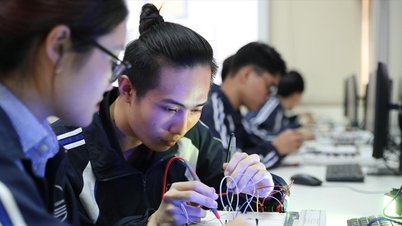





















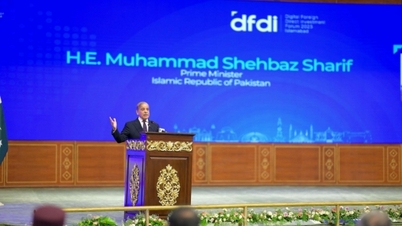
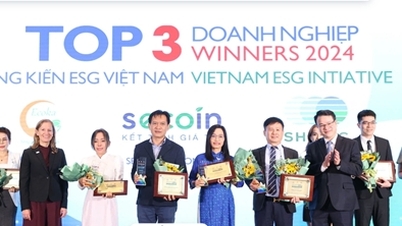







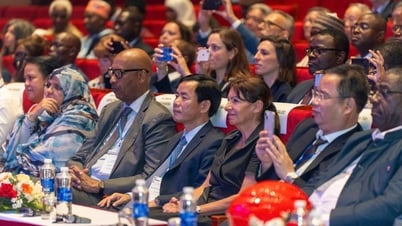


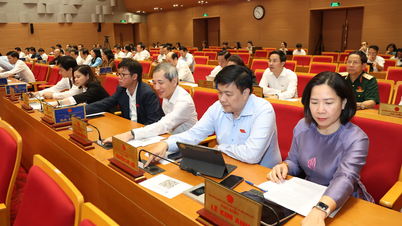




















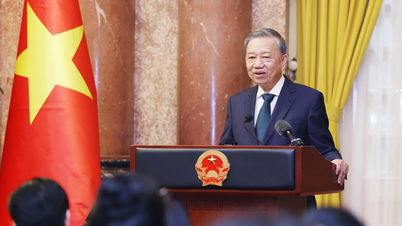




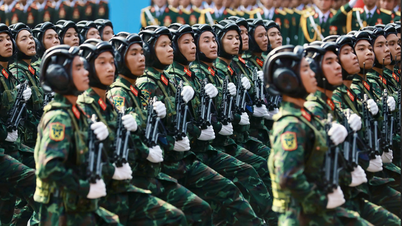


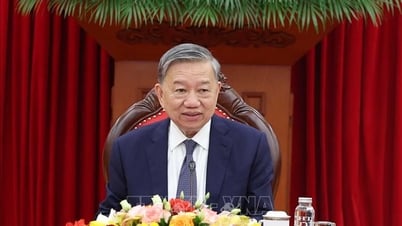































Comment (0)